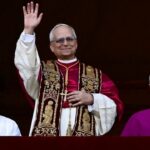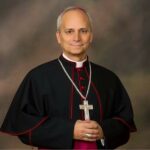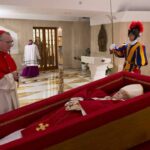Johnson formally becomes Britain’s new Prime Minister
Published on July 25, 2019 at 9:22 AM by Face of Malawi
Boris Johnson took office as British prime minister on Wednesday, vowing to implement the result of the 2016 Brexit referendum and lead Britain out of the European Union on Oct. 31 with “no ifs or buts”.
Johnson enters Downing Street at one of the most perilous junctures in post-World War Two British history – the United Kingdom is divided over its divorce from the EU and weakened by the three-year political crisis that has gripped it since that referendum.
One of Britain’s most prominent Brexit campaigners, Johnson has repeatedly pledged to leave the EU by Oct. 31 – “do or die” – and to inject a new optimism and energy into the divorce, which he argues will bring a host of opportunities.
But his strategy sets the United Kingdom up for a showdown with the EU and thrusts it towards a potential constitutional crisis, or an election, at home.
 Johnson enters No.10 Downing Street
Johnson enters No.10 Downing Street
“The people who bet against Britain are going to lose their shirts because we are going to restore trust in our democracy, and we are going to fulfil the repeated promises of parliament to the people and come out of the EU on October 31, no ifs or buts,” Johnson, 55, said after arriving at his new residence, No.10 Downing Street.
One of the issues that prevented his predecessor Theresa May getting a divorce deal through parliament was the Irish “backstop” – a provision that would maintain a customs union with the EU if no better solution was found.
Johnson was bullish, however. “Never mind the backstop. The buck stops here,” he said, watched by his girlfriend, Carrie Symonds, and his staff.
He said he would ensure “the people” were his bosses, and that he would accelerate preparations for a “no-deal” Brexit – the threat he intends to use to force a reluctant EU to renegotiate the exit deal it agreed with May.
To implement Brexit, Johnson will appoint Dominic Cummings, the campaign director of the official Brexit Vote Leave campaign, as a senior adviser in Downing Street.
Wednesday’s events combined arcane British political choreography with the realpolitik of appointing a new government – likely to be heavy on Brexit supporters.
Theresa May left Downing Street after a three-year premiership that was marred by crises over Brexit. She formally tendered her resignation to Queen Elizabeth.
May appeared to be fighting back tears as she was applauded out of the House of Commons chamber. Her finance minister, Philip Hammond, resigned.
 May and her husband Philip wave outside Downing Street, on her last day in office. Pictures by Reuters
May and her husband Philip wave outside Downing Street, on her last day in office. Pictures by Reuters
Johnson had a possible foretaste of turmoil ahead when, as he drove to his audience with the queen, Greenpeace protesters tried – but failed – to block the path of his car as his chauffeur drove around them.
The queen requested he form an administration. His formal title is now “Prime Minister and First Lord of the Treasury”.
His first task was to appoint key members of the government – names that will give a hint of how he will handle Brexit, Britain’s most significant decision in decades.
Source: Reuters
Subscribe to our Youtube Channel:


